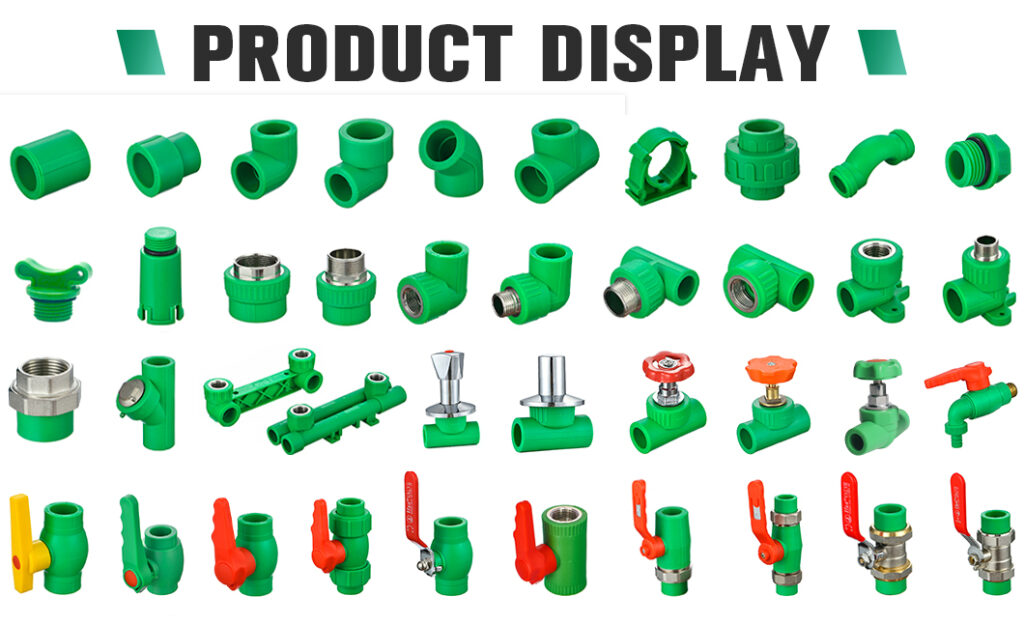Polypropylene Random Copolymer, known as PPR, has revolutionized the plumbing industry with its exceptional properties and versatility. PPR pipe fittings are increasingly becoming the preferred choice in plumbing systems, thanks to their numerous benefits and adaptability to a wide range of applications.IFAN factory 30+ years manufacture experience support color/size customization support free sample.Welcome to consult for catalog and free samples.This is our FacebookWebsite: www.facebook.com.
In this article, we will explore the versatility of PPR pipe fittings in the plumbing industry, shedding light on their various uses and advantages.
1. Residential Plumbing Systems:
PPR pipe fittings are extensively used in residential plumbing systems. Their excellent resistance to corrosion and scaling ensures a clean and safe water supply to homes. Whether for hot or cold water, PPR pipes are the reliable choice for plumbing in houses and apartments.
2. Commercial Buildings:
Commercial structures like office buildings, shopping malls, and hotels benefit from the versatility of PPR pipe fittings. Their ability to handle high-pressure water distribution, combined with the ease of installation, makes PPR an efficient choice for these applications.
3. Industrial Facilities:
Industrial settings often involve complex plumbing requirements. PPR pipes and fittings are well-suited to these demands. Their resistance to chemical corrosion and capability to withstand high temperatures make them essential for various industrial processes.
4. Agriculture and Irrigation:
Agriculture relies on efficient irrigation systems to optimize crop growth. PPR fittings are capable of withstanding high-pressure flows, making them ideal for the demands of agricultural and landscaping irrigation systems.
5. Healthcare and Laboratories:
Hospitals, clinics, and laboratories require plumbing systems that meet the highest standards of hygiene and safety. PPR pipe fittings provide a solution that ensures clean water supply and safe wastewater disposal, aligning perfectly with these stringent requirements.
6. Chemical Processing Plants:
Chemical processing facilities often deal with aggressive chemicals that challenge the integrity of plumbing systems. PPR’s resistance to chemical corrosion makes it an excellent choice for transporting these substances securely.
7. Renewable Energy Applications:
In renewable energy systems such as solar water heaters, PPR fittings play a vital role. They can withstand the high temperatures and pressures associated with these systems, ensuring efficient and safe energy production.

Advantages of PPR Pipe Fittings:
The success and popularity of PPR pipe fittings are due to their many advantages, including:
1. Durability:
PPR is renowned for its longevity, resulting in lower maintenance and replacement costs over time.
2. Thermal Insulation:
PPR boasts excellent thermal insulation properties, which help conserve energy and maintain fluid temperatures.
3. Corrosion Resistance:
PPR is highly resistant to chemical and environmental corrosion, ensuring the reliability of the plumbing system.
4. Easy Installation:
The lightweight and user-friendly nature of PPR pipes and fittings simplifies the installation process, reducing labor costs and installation time.
5. Hygiene:
PPR materials are non-toxic and do not compromise the quality of transported fluids, making them ideal for applications where hygiene is paramount.
In conclusion, the versatility and adaptability of PPR pipe fittings in the plumbing industry are undeniable. They have established themselves as a reliable choice for a wide range of applications, ensuring safety, efficiency, and longevity. Whether you’re planning a plumbing system for a home, an irrigation system for agricultural use, or a complex industrial plumbing network, PPR pipe fittings offer a dependable solution. Armed with a thorough understanding of their properties and benefits, you can confidently choose PPR for your plumbing needs.

